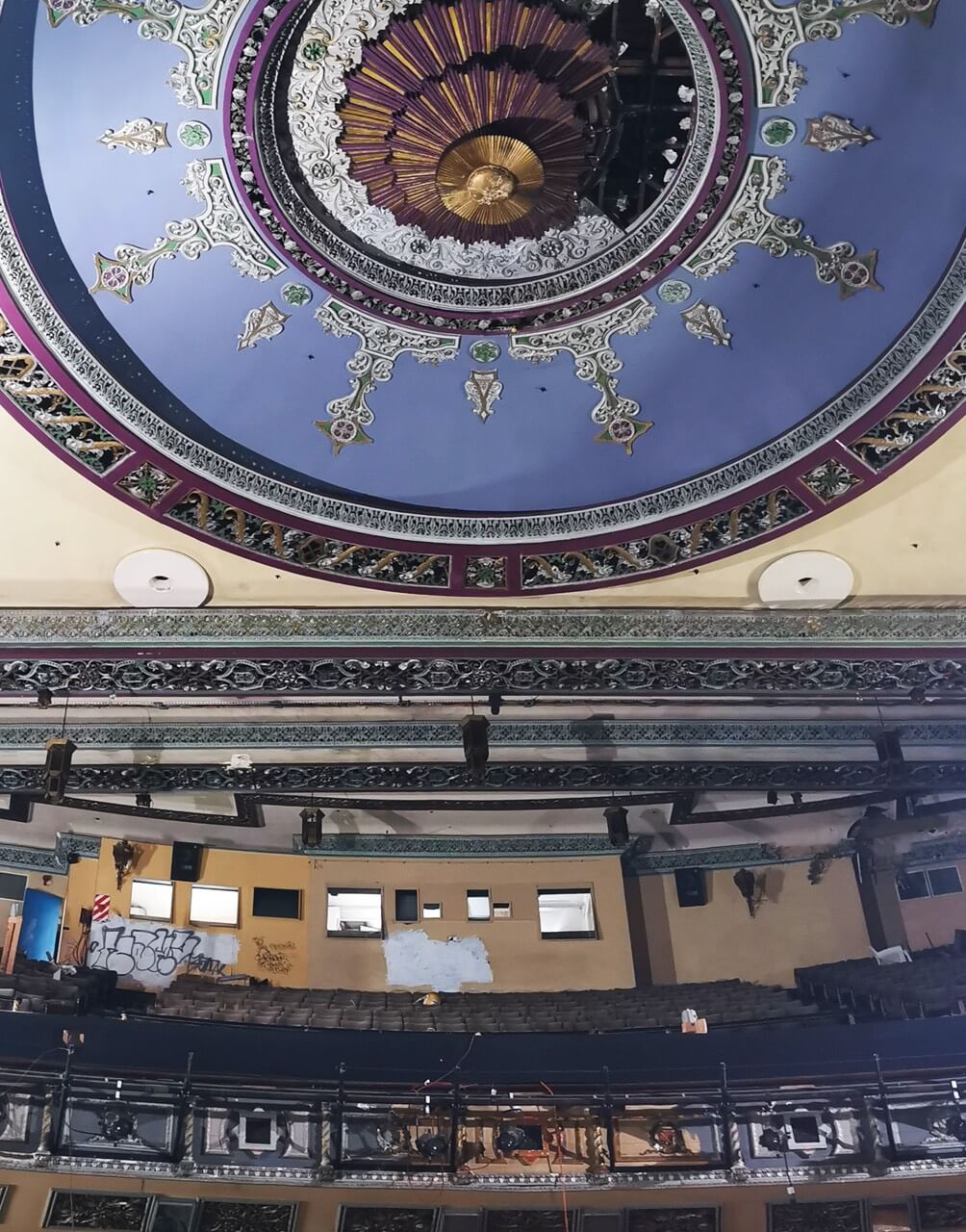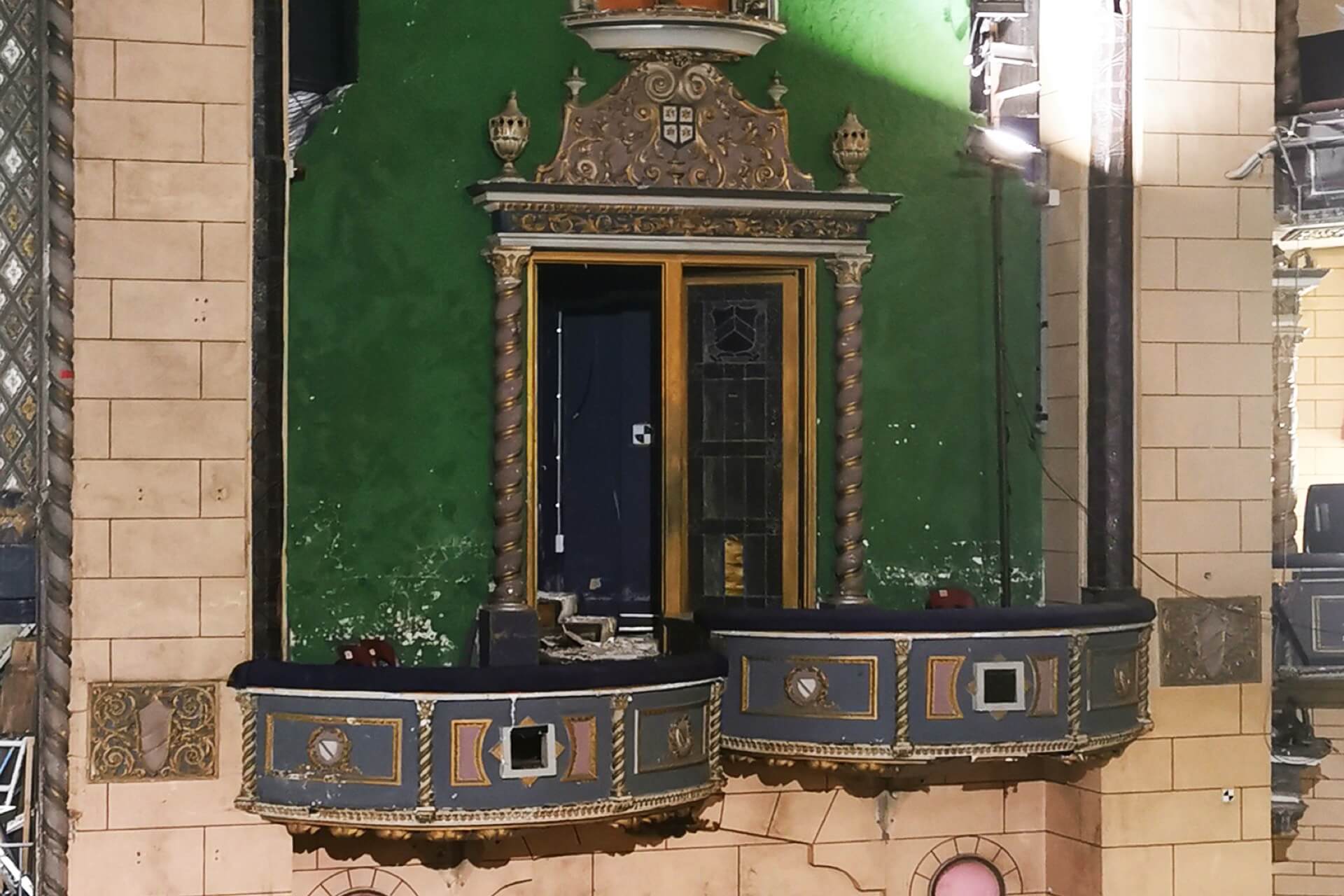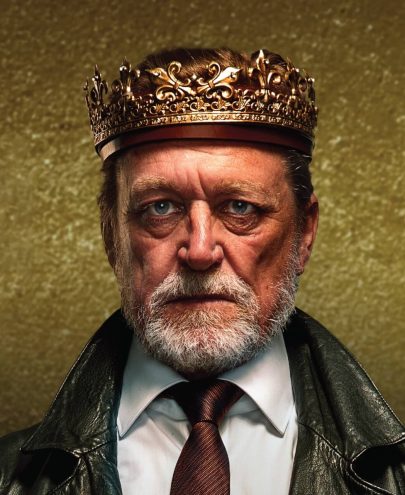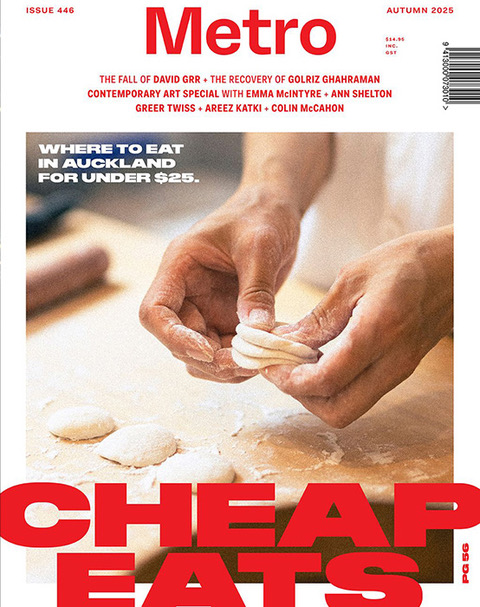Jun 18, 2024 Theatre
To quote the great film critic Pauline Kael, I lost it at the movies.
I was 11 years old when I started working as an ice-cream boy at the Cameo Theatre in Grey Lynn. I lived in Western Springs and went to school at Pasadena Intermediate. Every Saturday afternoon, I would get myself to the Cameo — a wonderful one-floor art deco theatre that now sits sadly empty after its most recent reincarnation as a trampoline park.
Movies became my life. Movies transformed and transported my entire generation into new and different worlds — wonderful escapism from bad teachers, bad school results and broken hearts. Before television (let alone video games and the internet), the world of film was everything. If you hadn’t seen a particular movie, whether it was King Kong, Frankenstein or Judy Garland, you felt life was passing you by.
By the time I was 13, I knew I wanted to work in the movies, and so I graduated to being an ice-cream boy at the St James Theatre, part of the great Kerridge Odeon chain. This was the big time. The St James was a 2000-seat, three-tier, magnificent jumble of classical and baroque sculptural art. Everything was on a grand scale — like a Moroccan palace combined with Versailles, all in one stunning building on Queen St. It was filled every Friday and Saturday. I quickly became the head ice-cream boy, earning 10 shillings every Saturday. I dreamt big — maybe I could be a theatre manager when I left college. After all, the guy running it had just married Miss New Zealand. When I left school I applied to the Kerridge Odeon office to become a trainee theatre manager. The interview lasted half an hour, and I got the job. I started at the St James, next door to the plush KO offices, in January 1957. My life in movies became a reality.
The St James was the premiere movie house in the Kerridge chain developed and then part-owned by Robert Kerridge. It had two entrances: a grand one on Queen St with its wonderful terrazzo foyer and the smaller Lorne St exit. In between was a movie mecca. The St James had originally been commissioned by the entrepreneurial Fuller family to replace Fuller’s Opera House, which burnt down in 1926, and it was intended for vaudeville performances. Costing a staggering £80,000 ($160,000) to build in 1928, the new theatre was completed in nine months. Great attention was paid during the design and construction so that sound from the stage would be perfect and no seat would be more than 25 metres away. Its over-the-top opulence was down to Dunedin-born architect Henry Eli White, who had already designed dozens of theatres in Australia and New Zealand, including Wellington’s St James in 1912. White’s Spanish-influenced design for the Auckland St James featured lush mystic touches of East and West, with ornate statues and a magnificent marble staircase. Ads by the companies which had contributed to its outfitting boasted in the New Zealand Herald in 1928 of “unique designs in Fibrous Plaster”, while “Venetian Terrazzo Marble adds the finishing touch”. Tonson Garlick Co of Karangahape Rd were proud of providing the “amazingly comfortable LACE WEB SEATS”, curtains, carpets and other “handsome furniture”; and Greek-style mosaics and the exquisite detailing of doors and panelling offered a sense of beauty and comfort. It was New Zealand’s finest theatre.
The St James opened on 5 July 1928 with a show by an imported London musical company. For its first year, the St James was the centre of vaudeville and musical performance in the city, but with the arrival of talkies, it quickly geared up to add cinema projectors and the largest screen in the country. On Boxing Day 1929, it screened its first film, Gold Diggers of Broadway.
As I learned more about the behind-the-scenes magic, my ambitions changed. Now I wanted to learn the art of cinema projection. The huge operating box at St James was equipped to show the film, via two enormous projectors that were fuelled by carbon arcs to project the purest white light onto a screen 35 metres away, but also to control the hundreds of lighting panels and their colour changes. Two massive waterfall curtains would open to announce the beginning of a film, and a huge wall of levers controlled the lighting, which had to be coordinated with music. It was my job to meet this benchmark of presentation performance, as well as changing the reels, focusing, and doing sound projection. These were complex skills that the two projectionists well into their 70s had been perfecting for decades. On Wednesdays, I replaced the bulbs in the great proscenium arch, and got to know every socket and every imported coloured lightbulb. I thought it was the best job in the world.
A few years before I started, the theatre had the distinction of hosting a young Queen Elizabeth and Prince Philip at a grand screening on Boxing Day in 1953, during their first visit to New Zealand. A decade later, theatre-owner Robert Kerridge received a knighthood in the June 1962 Queen’s Birthday honours list. It was a truly glamorous business.
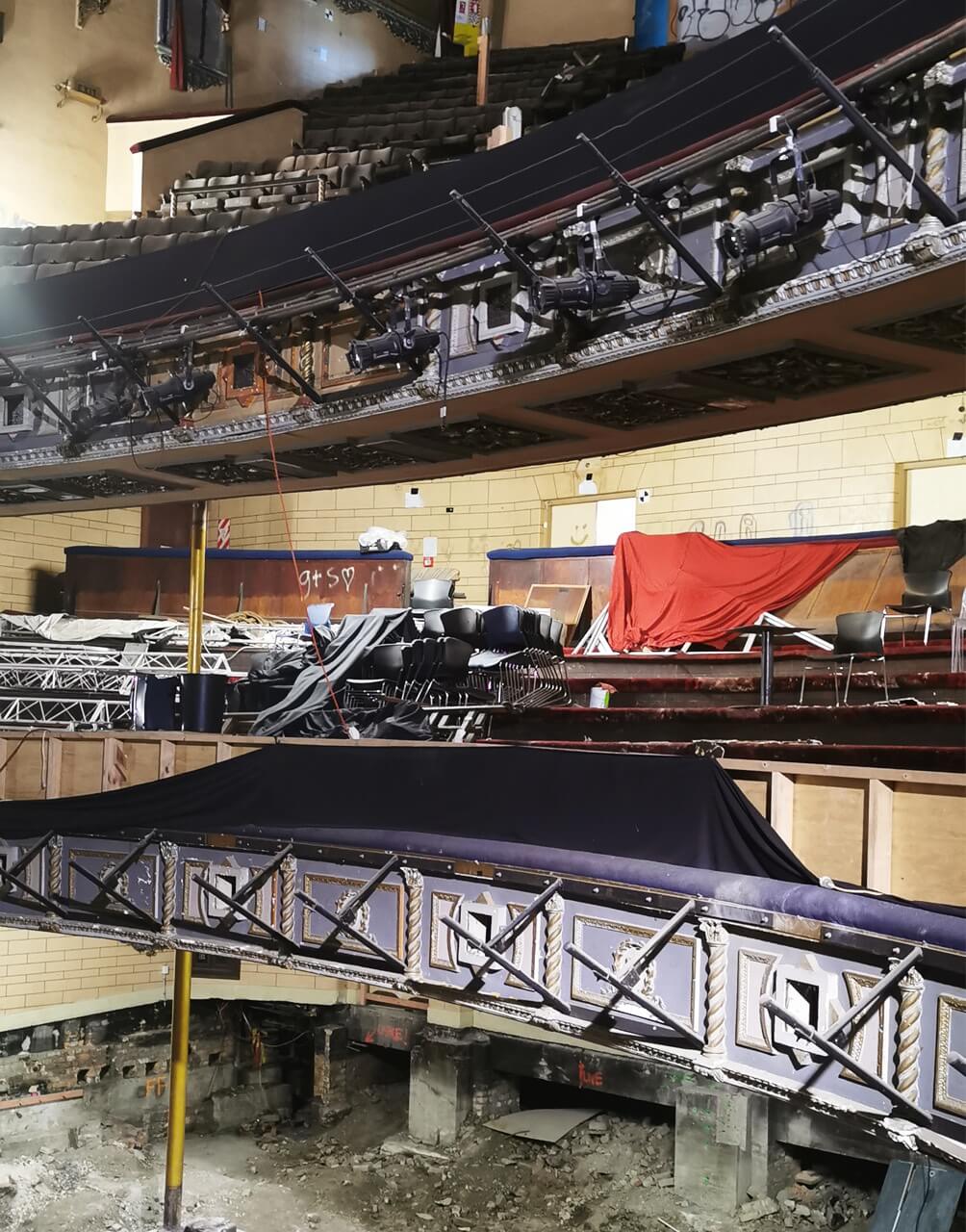
Sir Robert Kerridge’s son, Bob Kerridge Jr, was a regular visitor to the operating booth. He would sit for hours talking to me, wanting to learn everything he could about running a theatre. He intended to take over at Kerridge Odeon from his father, who stepped back as managing director in 1976 and passed away in 1979, but the financial crash of ’87 and the merger by corporate raiders Pacer Pacific saw the end to that dream. (The Pacer Kerridge Corporation then collapsed in 1992, owing the bank $129 million.) Bob Jr went on to become the chief executive of SPCA Auckland, a role he held for decades, but he never stopped loving the St James.
In 2007, a fire caused severe damage to the theatre and it was forced to close. Bob Jr fought valiantly for its restoration, founding the ‘St James Saviours’ (whose members included such luminaries as Dame Judi Dench, Sir Ian McKellen and Alan Bennett) in 2010 to lobby for restoring the theatre to its former glory. This was the first major attempt to restore the theatre — we’re now in the middle of what will hopefully be the final successful effort to bring the neglected building back to life. After Bob Jr retired to Hawke’s Bay, the St James needed a new champion and found one in George Farrant, Auckland Council’s principal heritage adviser. It was Farrant’s love of this iconic building that recommended it to the man who would become its new saviour, Steve Bielby.
Bielby, an heir to the Target Furniture empire, is passionately dedicated to the preservation of Auckland’s heritage architecture. In 2013, he set up the Auckland Notable Properties Trust — backed by money from a family trust — and brought together Auckland architects, planners and council supporters. Bielby, who studied commercial law and business management at the University of Auckland, talks the business language of a city developer; he knows that historical buildings can be more than historical relics, instead playing an active role in the contemporary life of a city. Bielby’s first project was restoring the old cottages at 30 Airedale St, and he soon turned his attention to the St James.
Plans to fix up the theatre became entwined with a project to build an apartment complex on an adjacent site, first explored by developer Paul Doole and then from 2014 by the Li family and their company Relianz Holdings. The Li family formed an alliance with Bielby, transferring ownership of the theatre to him and his trust, which committed $15 million to the project. While the apartment plans have failed to get off the ground, work on the theatre’s restoration has been quietly grinding on for years. Bielby and Farrant worked tirelessly to put together a credible funding package for the restoration, securing a pledge of $15 million for the project from Auckland Council in 2015–16, back in the Len Brown era. In 2017, the Ministry for Culture and Heritage also agreed to commit $1.5 million from its Heritage EQUIP fund for earthquake strengthening. The pledged funds were mounting up, while the apartment plans — now a massive 43-level development of 400 units — continued to stall.
Unsure if the council promise still stood all these years later, I talked to current mayor Wayne Brown and was pleased to hear that he had some affection for the theatre — although he said he was personally dubious that after years of neglect it could be restored to its former self. The old council offer stands, he confirmed, provided that work is under way by July of this year. After that, the council offer will lapse.
Then, in July last year, the government also came to the party, with arts, culture and heritage minister Carmel Sepuloni announcing a government contribution of $15 million to match the council’s figure. But with a new coalition government looking to save whatever money it can, to pay for election-promised tax cuts, was that money still there? I rang the new Minister of Arts, Culture and Heritage, Paul Goldsmith, asking him about the plans to bring the St James back to glory in time for its 100th birthday in 2029. He confirmed that the new government, too, still had $15 million allocated for the project.
Bielby says the combined $46.5 million will get most of the way to getting the theatre back on its glorious feet, though it may require another $10 to $15 million for the final push when the building’s potential inhabitants set their requirements. New Zealand Opera will need a large stage and scenery sets; New Zealand Ballet have to have a sprung stage. Bielby has no doubts that he can find the funds for this last top-up — he’s already started to gather support in a wide net.
I stand in awe of Bielby’s knowledge and enthusiasm as he talks me through what the combined $60 million or so will accomplish. The newly appointed general director of Opera New Zealand, Brad Cohen, joined one of our tours of the building. He returned to New Zealand in 2022 to conduct Verdi’s magnificent Macbeth, and makes it clear that he would like to house Opera New Zealand in a newly restored St James, as well as possibly using the building space next door for rehearsals and corporate offices. It would be a marriage made in operatic heaven. Cohen has conducted orchestras in some of the world’s great musical venues, and understands what is needed acoustically at the St James. The existing sound and the sight lines are just perfect, he says — most performance houses would envy them. Cohen sees huge potential for the new St James as a widely used venue, fitting perfectly into the Aotea precinct that includes the nearby Town Hall, The Civic and the Kiri Te Kanawa Theatre. We talked into the night about its fantastic possibilities in a new, exciting Tāmaki Makaurau.
The logistics are now in the hands of engineers and architects, though much has already been done by Bielby. In 2022, a team of thieves took over the building for a few days and stripped it of all its copper wiring and cables. They also took a magnificent bronze statue from the grand staircase; in response, Bielby travelled to Paris and found a replica at a French antique gallery. He has already overcome major difficulties — the stalling of Relianz Holdings’ apartment plans, two electrical fires, constant break-ins. Now, with clear financial commitments for the project finally achieved, these hiccups seem well in the past.
Deep care and respect for the building and its historical significance will be needed as the work gets under way. Standing there with Bielby among all the memories, as he turns the house lights on for yet another tour, it’s a breathtaking moment. All of us in the room have joined him to see just how wonderful the theatre will be once returned to its former glory — a project undertaken not only for the public good, but as a legacy from one generation to the next. After a depressing 17 years of closure, this Grand Old Dame of Queen St deserves her encore.
